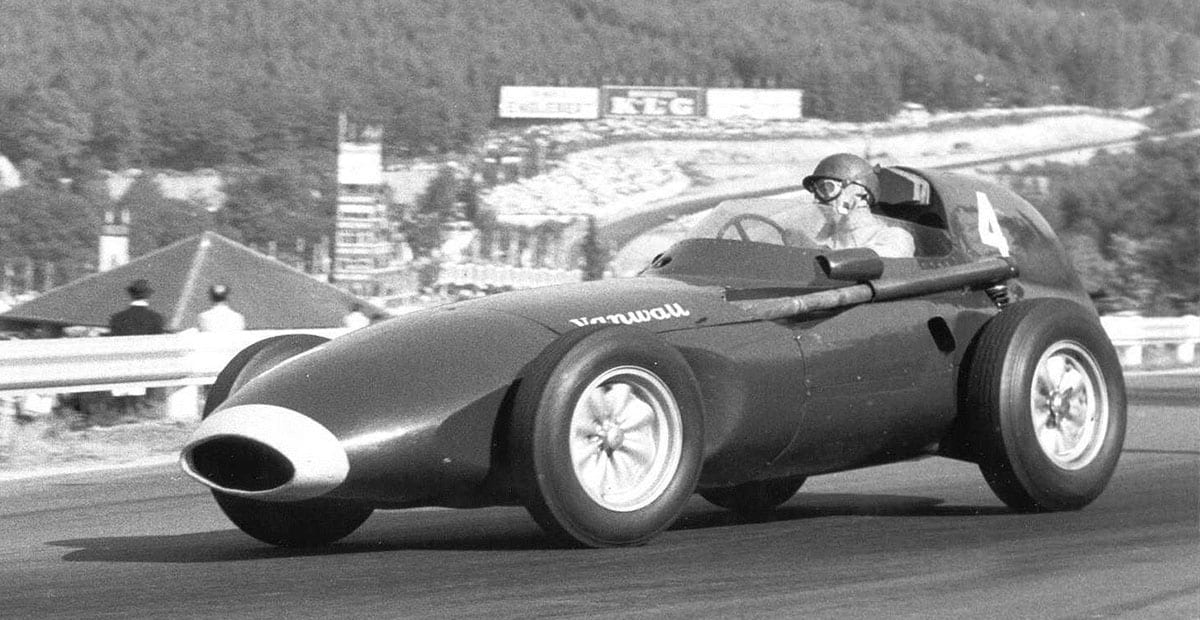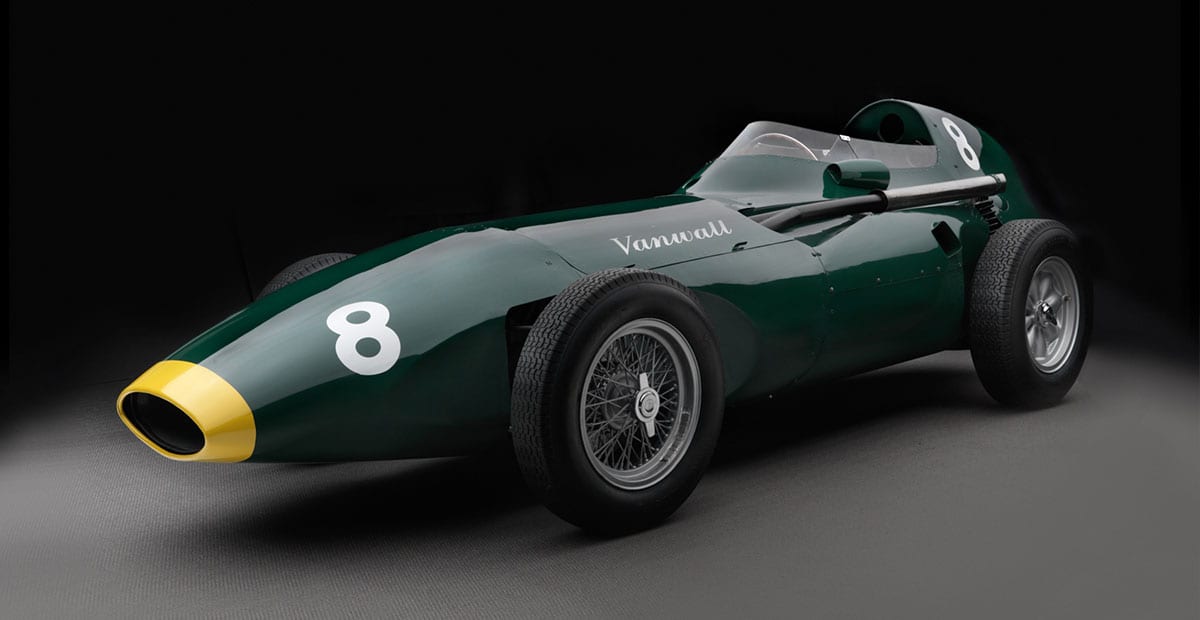Tech Specs
Four-cylinder in-line engine, twin overhead camshafts, fuel injected, 2490 cc, 262 hp at 7500 rpm.
Before/After
1958 Vanwall


About the 1958 Vanwall Formula 1
The Vanwall, the first British racer to win a Formula 1 world championship, reflected Guy Anthony Vandervell’s obsession to beat “those bloody red cars”. And Vandervell knew Italian cars well, having fielded modified Ferrari Grand Prix racers called “Thinwall” (after the bearings he manufactured) Specials in 1954-1955.
Vandervell was a majority shareholder in Norton motorcycles. Thus the 2-liter twin-cam power unit of his new racer had four water-cooled cylinders derived from Norton’s 500cc racing bike engine. The chassis was built by Cooper, but chassis and transmission design borrowed liberally from Ferrari and Maserati. Victories were few.
Vandervell soon ditched Cooper and engaged Colin Chapman, whose Lotus sports-racers were setting new standards in light weight and rigidity. Chapman designed an entirely new multi-tube space frame chassis for the Vanwall, whose under-seat Ferrari clone transmission posed aerodynamicist Frank Costin the conundrum of designing a body to fit the tallest Grand Prix car of the era. His bold decision to increase frontal area to create a smooth low-drag body made the resultant “teardrop” Vanwall so slippery that no red rival could stay with it on high-speed straights.
Nor was Vandervell afraid to seek advantage outside parochial British industry. Germany provided Bosch fuel injection and America Goodyear-derived aeronautical disc brakes. The sophisticated new Vanwall overcame its initial fragility within two seasons with nine Grand Prix victories accruing in 1957-1958. Culmination came in 1958 with three wins apiece for Stirling Moss and Tony Brooks, solid team back-up by Stuart Lewis-Evans – and the Formula 1 Constructors’ World Championship for Vandervell. But Moss lost the Drivers’ Championship (his third near miss) by a single point to Mike Hawthorn of Ferrari.
Emotionally devastated by the fatal accident to Lewis-Evans during that year’s final Grand Prix in Morocco, his health impaired by the intensity with which he had pursued the World Championship, Vandervell was ordered complete rest. The laurels upon which he could follow doctor’s orders were enormously satisfying. His Vanwall was the last successful, fastest-ever front-engined Grand Prix car.
Photos – Peter Harholdt











